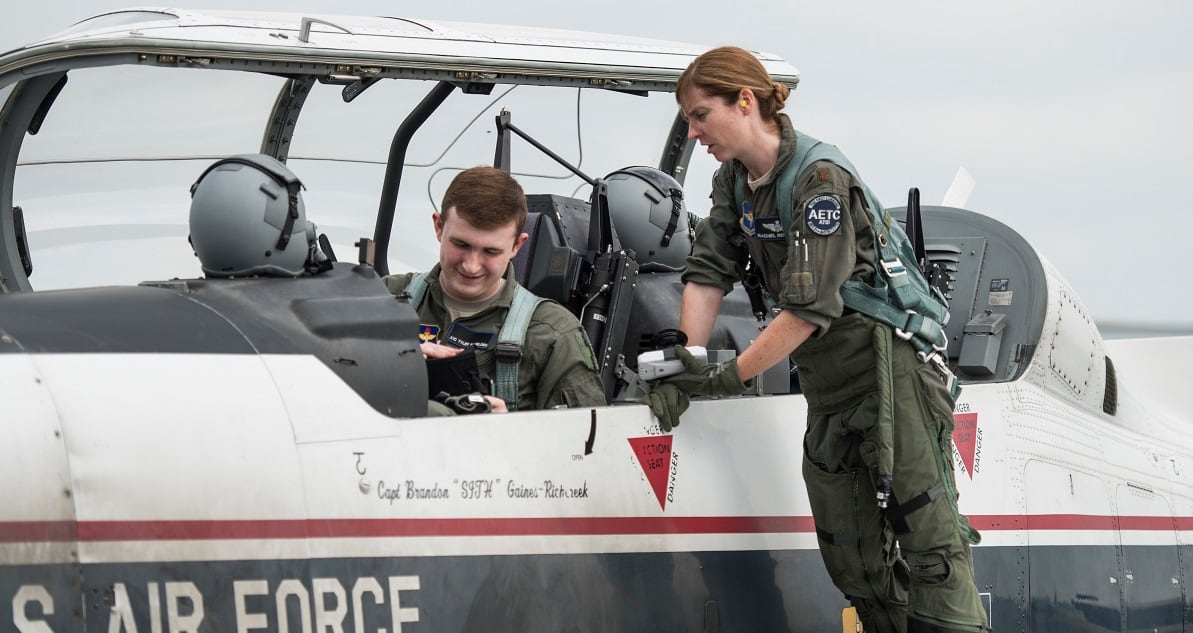The Air Force hopes to be able to train 1,500 new pilots each year by fiscal 2022 as part of its effort to solve its troubling shortage of aviators.
Air Force Secretary Heather Wilson said at a Senate Armed Services readiness and management support subcommittee hearing Wednesday that the Air Force trained 1,160 new pilots in fiscal 2017, and expects to train 1,311 in fiscal 2019, before expanding further.
The Air Force has taken several steps to try to improve air crew’s quality of life and quality of service, and solve problems that might be leading some to choose to leave the Air Force. Wilson highlighted efforts to reduce operating tempos, revitalize squadrons and restore support staffs so air crew can concentrate on flying, as well as generous incentive pay and bonuses.
The Air Force is also working on testing a “fly-only” technical track for interested airmen, and giving air crew greater input on assignments.
But, Wilson said, “retention efforts alone will not solve the aircrew shortage," leading the Air Force to beef up its training capacity.
Increased pilot training capacity could become even more important as the Air Force seeks to increase its number of operational squadrons from 312 to 386 by the end of 2030.
Wilson told lawmakers that restoring readiness must be a top priority of the Air Force. The service is focusing on fixing readiness in the 204 operational squadrons that would be most important in a high-end fight. By the end of 2020, she said the Air Force hopes 80 percent of those units will have the right number of properly trained and equipped airmen. And two years after that, Wilson hopes 80 percent of all 312 operational squadrons will be ready.
The Air Force has already made significant progress in cutting the maintainer shortage, Wilson said. Two years ago, the Air Force was short 4,000 maintainers, but by December, that gap is expected to be completely eliminated.
But the Air Force’s work on maintenance isn’t done. Wilson said these new, green maintainers must be seasoned until they have enough experience to do more complicated or unsupervised work.
RELATED

The focus on maintenance and readiness is especially acute, given Defense Secretary Jim Mattis' order to have the F-35, F-22 and F-16 fighter jets, as well as the Navy’s F-18, up to 80 percent mission-capable by the end of next September.
Sen. Dan Sullivan, R-Arkansas, expressed concern that about one-third of F-35s are not available, even though it’s the Air Force’s newest aircraft.
Wilson said the a lack of spare parts is a major factor limiting F-35′s readiness, which varies greatly by squadron.
John Pendleton, director of defense capabilities and management for the Government Accountability Office, said that the Air Force “focused on production, and not enough on sustaining the aircraft ... and it’s causing problems now.”
The service has “high confidence” that an oxygen concentration problem was causing a series of physiological episodes in the service’s T-6 training aircraft during certain maneuvers, Air Force Chief of Staff Gen. Dave Goldfein told senators.
Now that the Air Force has zeroed in on the problem, Goldfein said, it is changing its maintenance procedures to minimize any oxygen level issues.
In the long term, Goldfein said, the Air Force is planning to redesign the oxygen system in the T-6 to prevent it from becoming a problem again. A team is now drawing up plans for the redesign, and Goldfein said it will be a top priority when they’re finished.
Stephen Losey is the air warfare reporter for Defense News. He previously covered leadership and personnel issues at Air Force Times, and the Pentagon, special operations and air warfare at Military.com. He has traveled to the Middle East to cover U.S. Air Force operations.





